Gardeners grow apricots not only in southern regions but also in areas like Northern France, Germany, and Scandinavia. Delicious harvests are achieved through regular watering, fertilising, mulching, and loosening the soil. One method used by gardeners to ensure successful fruiting is transplanting trees to a new location. Let’s explore how to correctly transplant an apricot tree and the key recommendations to follow.
Table of contents
- Why Transplant an Apricot Tree in Summer
- Can You Transplant a Mature Tree to a New Location?
- Best Time for Summer Transplanting
- Choosing a New Location
- Preparing the Apricot Tree for Transplanting
- How to Transplant an Apricot Tree Correctly
- Special Considerations for Different Varieties
- Post-Transplant Care
- Expert Tips
- Conclusion
Why Transplant an Apricot Tree in Summer
Transplanting an apricot tree is a complex procedure that helps increase fruit yield. It is necessary if the initial planting location was unsuitable, leading to poor growth, frequent diseases, and low productivity.
For example, the soil might be too acidic and clayey, or the plot may be exposed to strong winds. It is advisable to transplant an apricot tree no more than 1–2 times. Frequent replanting can shorten the tree’s lifespan.
Moving it to a suitable location results in larger, sweeter fruit. The flesh becomes juicier and more sugary. The tree becomes more resistant to diseases and less affected by sudden weather changes, winds, and heavy rainfall.
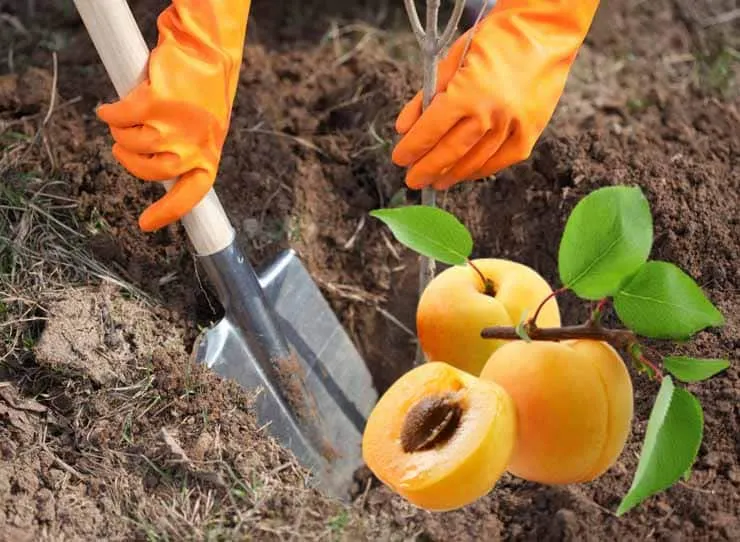
Can You Transplant a Mature Tree to a New Location?
Experienced gardeners recommend transplanting only apricot trees younger than 2 years. Older specimens experience significant stress during the process, reducing their chances of survival—though success is still possible.
In some cases, even five-year-old trees adapt well to new conditions and produce a tasty harvest within 2–3 years.
Best Time for Summer Transplanting
To determine the ideal time for transplanting, consider the weather and the tree’s age. For young saplings, the best period is early to mid-June.
The weather should be warm but not excessively hot, with an optimal air temperature of around +18°C. Mature trees should be transplanted in late summer, after fruiting. Harvest the apricots and wait 10–15 days before proceeding.
Favourable Dates According to the Lunar Calendar
Gardeners often use the lunar calendar to identify the best and worst days for agricultural tasks.
June 24 is ideal for transplanting young apricots, while August 18 and 27 are recommended for mature trees. However, relying solely on the lunar calendar is insufficient—weather conditions must also be suitable.
Choosing a New Location
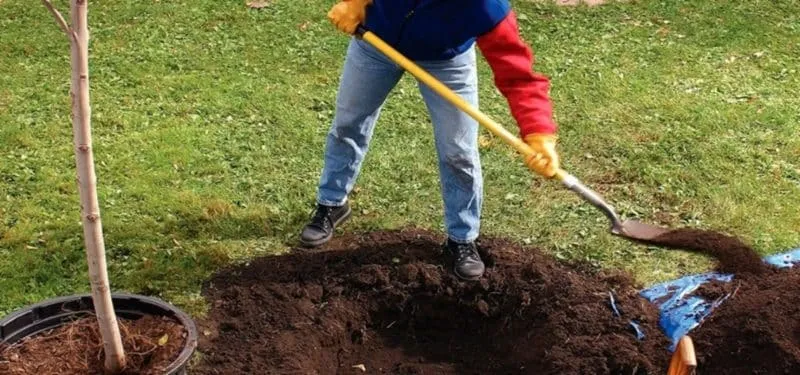
Apricots thrive in warm conditions, so they should be planted in sunny, wind-protected areas. The tree prefers sandy-clay soil with neutral acidity.
Note! Apricot trees have wide, spreading canopies, so saplings should be spaced at least 3–4 metres apart. If planting near a fence or garden structures, maintain a distance of 2.5–3 metres.
If the soil is too dense and acidic, lime it and add clean sand. A drainage layer of gravel, crushed stone, and dry branches improves soil aeration and lightness.
Good and Bad Neighbours
Apricots need full sunlight, so surrounding trees or shrubs that block the sun will harm them. The tree has an extensive root system that absorbs nutrients aggressively, leaving little for nearby plants.
Unfavourable neighbours: apple trees, plum trees, walnut trees, blackcurrants, and raspberries (they compete for resources). Suitable companions include garlic, lettuce, dill, and spring onions, which can even be planted near the trunk.
Preparing the Apricot Tree for Transplanting
Water the tree thoroughly with warm water 2–3 hours before transplanting. Moisture helps soil cling to the roots, preventing damage. Dig a trench 60 cm deep around the tree, trim long roots with a spade, and wrap the root ball in burlap or a prepared sack.
Note! Only healthy trees should be transplanted. Avoid those showing signs of disease—spots, dry leaves, or root rot. Inspect all branches and foliage carefully.
Never transplant an apricot "dry"—this damages delicate roots and reduces survival chances.
Preparing the Planting Hole
Prepare the hole a month in advance. Dig the soil to a spade’s depth, removing debris and plant residues. If the soil wasn’t treated with boiling water in early April, do so now to eliminate pathogens and pests.
The hole should accommodate the entire root system and canopy. Fertilise it with a mix of ammonium nitrate and superphosphate (200 g each).
How to Transplant an Apricot Tree Correctly
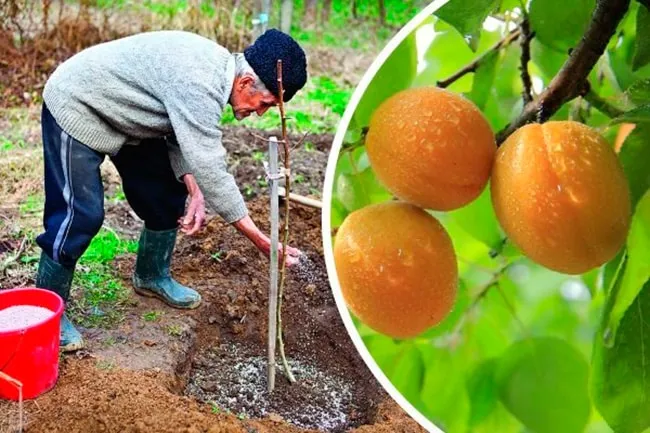
Before starting, gather tools: a spade, watering can, and rake. Disinfect them with a potassium permanganate solution to prevent infections. Follow these steps:
- Place the dug-up sapling vertically in the hole.
- Gently spread the roots and cover them with loose soil.
- Create a soil ridge around the tree and lightly compact the ground.
- Water the tree generously.
Common Mistakes to Avoid
To ensure quick adaptation, gardeners must follow transplanting guidelines carefully. However, even experts sometimes make these errors:
- digging the hole right before transplanting, skipping fertilisation and drainage;
- failing to water the tree before uprooting it;
- planting apricots near pears, apple trees, or walnuts;
- digging a hole too small for the root system;
- damaging roots through rough handling;
- burying roots too deeply without leaving space for a soil ridge.
Special Considerations for Different Varieties
Early-ripening apricot varieties, such as Tomcot or Goldrich, should be transplanted between early April and mid-June. They are hardy, frost-resistant, and adapt quickly.
Late varieties, like Polonais or Hargrand, should be moved in July. These trees are more delicate, so transplant them only when soil temperatures are warm and air temperatures reach +25°C. Otherwise, their immunity weakens, reducing yield.
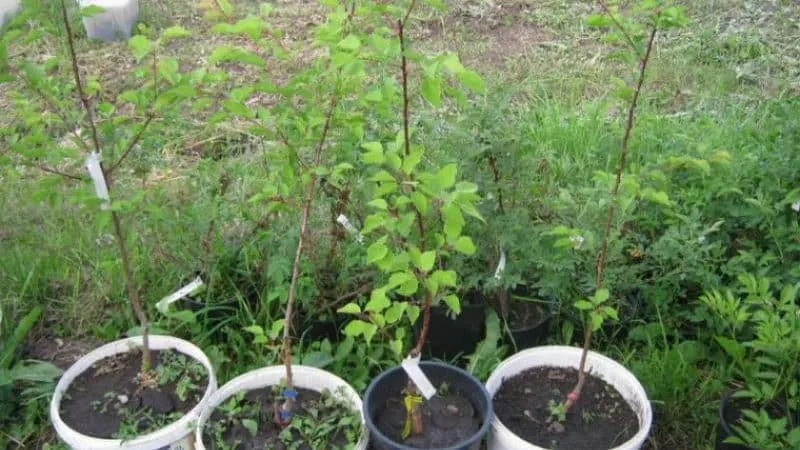
Age-Specific Tips
For trees aged 5–6 years, check thoroughly for disease symptoms. Even if no obvious signs exist, brittle or dry branches indicate nutrient deficiencies—avoid transplanting such trees.
Revitalise weakened trees with mineral fertilisers like Compo or Biobizz. These contain organic and humic acids, aiding quick absorption and strengthening immunity.
Young trees require less preparation—just adequate watering. Use sun-warmed water, as cold water may trigger diseases or pests.
Regional Variations
In colder regions (e.g., Scandinavia), prepare the hole 2–3 months in advance. If transplanting in June, dig the hole in late March or early April after snowmelt.
In addition to superphosphate and ammonium nitrate, add well-rotted manure or peat. Organic matter enriches the soil, protects roots from frost, and deters pests.
In southern Europe, spacing is crucial. Crowded trees reduce airflow, lowering yields.
Post-Transplant Care
After transplanting, apricots need regular, deep watering. In hot climates, young trees require ~12 litres of water, mature ones up to 20 litres. Water at the base.
To prevent evaporation, water early morning or evening. Loosen the soil to 10 cm depth before each watering—this retains moisture and prevents weeds.
Note! Protect apricots from rodents and frost by wrapping trunks and main branches with garden netting in late autumn. Remove it in early April.
After 2–3 weeks, treat trees with Provado or Decis to deter pests like moths and prevent bacterial canker or brown spot. Alternatively, use Bordeaux mixture (100 g per 10 L), spraying all foliage thoroughly.
Expert Tips
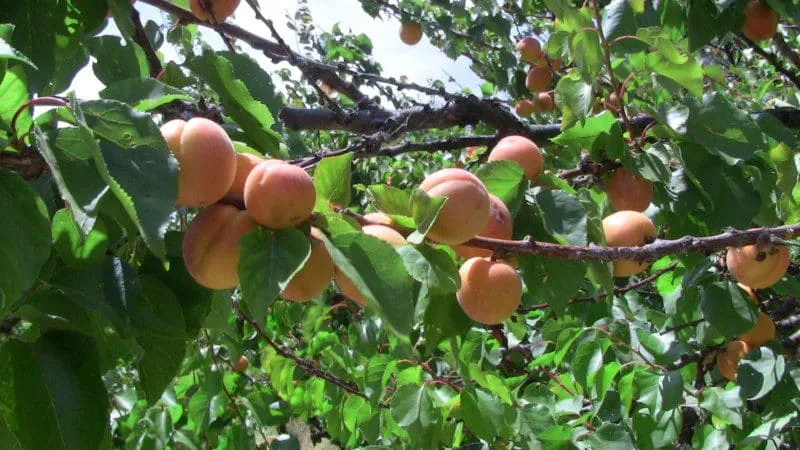
Follow these expert tips for a bountiful apricot harvest:
- select only healthy trees for transplanting;
- respect companion planting rules;
- water with clean, warm water;
- plant in sunny, well-drained spots;
- choose calm, warm days for transplanting;
- pick region-appropriate varieties;
- fertilise and treat against diseases regularly.
Conclusion
Transplanting begins with preparing a spacious, fertilised hole. Water the tree before uprooting, handle roots gently, and replant carefully. Trees under 2 years adapt best. Post-transplant, water generously, mulch, and monitor growth for a thriving apricot tree.







